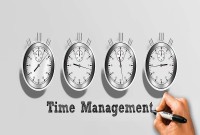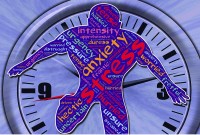- Home
- Business Processes
- Industry Knowledge
- Aerospace Industry
- Automotive Industry
- Banking Domain
- BFSI Industry
- Consumer/ FMCG Industry
- Chemicals Industry
- Engineering & Construction
- Energy Industry
- Education Domain
- Finance Domain
- Hospitality Domain
- Healthcare Industry
- Insurance Domain
- Retail Industry
- Travel and Tourism Domain
- Telecom Industry
- Leadership Skills
- eLearning
- Home
- Leadership
- Project Leadership
- Focus Areas for Change
Focus Areas for Change
Four main areas in an organization that need special focus when we discuss the change in an organizational setup are organizational structure, technology, work environment, and the people. Some people call it a process, system, and people. Change in an organization includes adapting to change, controlling change, and effecting change.
Organizational change results from the pressure of forces, which are both inside and outside the organization. The external forces like technology, nature of work, economic shocks, competitions, social trends, and politics necessitate a change in the internal organization like machinery, equipment, relationships, leadership and decline in profitability, etc. This organizational change is the alteration of the work environment in an organization which implies equilibrium between different components of the organization. In some way or the other change influences, the whole organization as the subunits or various departments in an organization are interrelated and interdependent.
Different sections or different departments of an organization are influenced by change differently and this influence may vary in its speed and degree. Usually, there are many changes occurring simultaneously in an organization. An effective management technique is thus required in order to deal with the changes. Four main areas in an organization need special focus when we discuss the change in an organizational setup, they are as follows:
Changing Organisational Structure:
With globalization, competition, and technological advancements, it becomes necessary that changes are made in the structure of the organization. Thus this one of the most important changes that can be brought about in an organization and the one that will call for planning and a lot of effort and involvement of management and employees at all levels. As standalone components, people, process, and technology are necessary for organizational transformation and management. To achieve organizational efficiency, you need to balance the three and maintain good relationships among them.
Sometimes the technology itself might require new styles of organization, new sills, and the upgrading of old ones. The number of operating sites may be reduced. People may find themselves performing totally new functions, which they may like or perhaps won't like, at least to start with. The only way to stay in business may be a merger or to be the subject of a takeover, friendly or hostile. With such ownership changes, another market, technological and organizational changes may follow. In some industrial, it is an endless cycle.
Changing Systems & Technology:
The changes in the marketplace give rise to specific happenings in the company. There will be the introduction of new technology, in order to reestablish price advantage, quality preeminence, or diversification into new products. There will be a decision to explore areas of the globe where you are not previously represented. Technology is the primary delivery route for virtually all value in a modern organization; all services are now, to some degree, enabled by technology. Technology and having the right systems in place is becoming more and more critical. Systems allow one to automate what would otherwise be manual reporting tasks, but, if managed correctly, they provide real-time information that can fundamentally change a business. The constant changes and improvements in technology present a new challenge. Technology is fast-changing and the organization has to keep pace with it in order to remain in business and survive the strong competition. Thus new machinery has to be bought or existing machinery has to be updated in the organization. This is a major change as, as per the technological advancements other changes like changes in structure, job positions, training programs, etc. have also to be made.
Changing Processes & Work Environment:
A process is a series of actions or steps that need to happen in order to achieve a particular goal. A company can have the greatest people and teams, but without the right processes, it becomes incredibly difficult to scale. The work environment is fast changing due to various reasons, as a result of diversity in the organization, changing technology, changes in the job market, etc. The launching of new products or mergers or acquisitions may also call for certain changes in an organization. Thus the organization has to keep track of such changes and develop measures to deal with them.
Changing People in the Organisation:
Every manager knows that people are the capital by which they get their results, and most of the time managers acknowledge this. Building teams allows us to effectively build global organizations that allow for seamless international coordination. Our ability to work together enables us to adapt to change, create uniform processes, and leverage our differences to blaze a path forward. Changes can also occur with regard to people in the organization, due to attitudes, values, beliefs. Changes can also be as a result of new recruitment, promotions, demotions, transfers, etc. may also take place and they are to be effectively dealt with.
Related Links
You May Also Like
-
Time management is the process of planning and exercising conscious control of time spent on specific activities, especially to increase effectiveness, efficiency, and productivity. The best time management techniques improve the ways you work. Time management refers to managing time effectively so that the right time is allocated to the right activity. Learn more about the five steps for effective time management viz. study, identify, analyze, decide, and implement.
-
Team Development by Building Trust
As your team begins to work together, you need to establish a way each team member can exchange ideas and build mutual trust. Successful groups are built on trust and collaboration. A free exchange of ideas, in an open environment, will allow your team to get to know each other and enable you to check on how they work together. Learn some tips to help build team trust and establish personal bonds.
-
Collaborative leadership is all about collaborative problem-solving and decision-making or can also be defined as the leadership of a collaborative effort. . The term started to appear in the mid-1990s in response to the formation of long term public-private partnerships to rebuild public infrastructure. Learn how you can use principles of collaborative leadership to enhance your leadership skills for being an effective leader.
-
Symbolic Interaction and Social Change
George Herbert Mead, an American philosopher, affiliated with the University of Chicago founded the theory of symbolic interactionism. A major aspect of this is that people interact by symbols both verbal and non-verbal signals and every interaction makes a contribution to the mental make-up of the mind thus every interaction with someone, changes you and you go away a different person signifying that humans and change go together.
-
Technological advancement has brought about radical changes in the methods of work and also in the organizational structure and talent strategies. The future of work is transforming our work, workforce, and workplace. Some important trends observed during recent times are discussed below.
-
Creating Highly Effective Teams
How do we create effective teams? What comes to mind when you think about an effective team? High performing teams exhibit accountability, purpose, cohesiveness, and collaboration. It is a team that works seamlessly as a whole. Everyone brings unique talents and strengths and support each other to bring out the best in everyone. How do you create one?
-
Change is a complex phenomenon. There are different types of changes that are going on around us. Listed in this article are twelve areas in which change arises and bring some classification to it. However one may classify the change, the various heading is always interrelated. The change could be triggered by market changes, technological changes, or organizational changes.
-
We define Lean as the systematic elimination of waste through a continual effort to decrease inefficiency; the lean leader strives to create a more efficient organization. Lean leadership is a philosophy. It is a consistent way of thinking and being in your role as a leader. The focus of this approach is on raising new leaders and help their team embrace a culture of continuous improvement. Learn what we mean by lean leadership style and its principles.
-
Crisis leadership is a very important part of leading in today's world. The skills a leader needs in order to guide people during a crisis are different from the skills needed to help a group grow. Are you a good crisis leader? What is your leadership style in case of a business crisis situation? A business crisis can test the strongest of leaders, read this article to explore how to ensure you’re ready to take action and weather the storm when one strikes you.
-
Evidence of the medically damaging symptoms of work stress necessitates applying the treatment of stress management. Stress management is increasingly drawing the attention to the management experts not only as a remedial measure but also as a way to resource management. If the workplace can be made a little more lovable the increase in the achievement of the organization may be much time more. If group stress can be removed by introducing group discussions and recreational facilities a long-lasting team spirit may get developed.
Explore Our Free Training Articles or
Sign Up to Start With Our eLearning Courses

About Us
Learning
© 2023 TechnoFunc, All Rights Reserved










